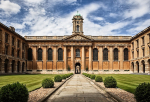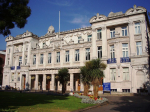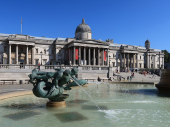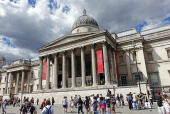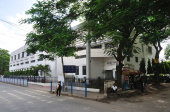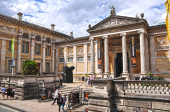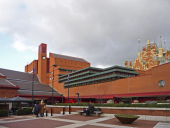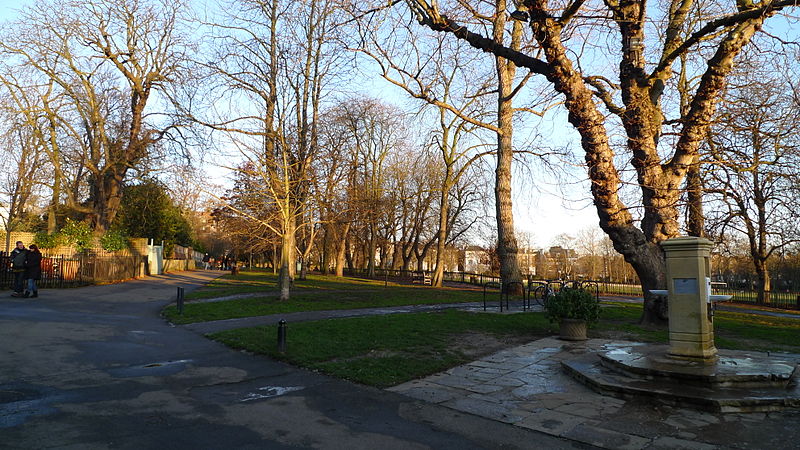
The Mayor of London, Sadiq Khan, is calling on the Royal Borough of Kensington and Chelsea (RBKC) to reinstate protected cycle lanes on Kensington High Street after independent research
found a clear majority of local residents support them. RBKC removed the cycle lanes last year just seven weeks after building them. The council are set to revisit the decision at a meeting in two weeks’ time, on March 17.
The survey, by ICM Unlimited, asked a representative sample of 1,000 RBKC residents about their attitudes towards protected cycle lanes. 56 per cent of respondents supported the cycle lanes, with just 30 per cent against.
Collision data shows that the road is one of the borough's worst casualty hotspots for cycling, with 15 people killed or seriously injured while walking or cycling over the past three years. This represents the highest casualty rate for people cycling of all main roads in the borough and is significantly above the Greater London average. The cycle lanes, now shown to be supported by the borough’s own residents, would dramatically reduce road danger on this street.
Walking and cycling have been hugely important for many Londoners during the pandemic. Over the summer, nearly half of all journeys in London were walked or cycled. TfL has been working closely with London boroughs to provide alternatives to using public transport whilst capacity is limited by social distancing, building 100km of new cycle lanes since the start of the pandemic.
More than 3,000 people each day, of all ages, used the protected cycle lane on Kensington High Street while it was in place. Data from Santander Cycles shows a significant increase in hires at docking stations close to the route when it was in. Hires at the five closest docking stations were up by 14 per cent in October, compared to a decrease of 0.5 per cent across the wider network.
TfL data shows that the trial cycle lanes did not lead to an increase in bus journeys times. Pre-pandemic, average bus journey times on Kensington High Street were just over 5 minutes per km. In the two weeks prior to the removal of the cycle tracks, the journey times for buses were lower than the same period in 2019, at 4.75 minutes per km.
Imperial College London and Imperial College Union - whose 23,000 person campuses straddle the route - have voiced support for safe cycle lanes on this route, along with many local schools. Other local institutions supporting safe cycle lanes on this route include Imperial Health NHS Trust as well as Chelsea and Westminster NHS Trust, iconic venues bordering the route, as well as national groups representing road safety, sustainable transport and the environment.
TfL research shows people who walk, cycle or use public transport to visit their local high street do so more frequently, and spend up to 40 per cent more than those who travel by car.
Sadiq Khan, the Mayor of London, said: “The ripping out of the new cycle lanes last year was not just an unacceptable waste of money, but went against what everyone could see: that the safe space for cycling on Kensington High Street was working. Cycling numbers were up, bus journey times down, yet the Council were swayed by a few loud voices committed to the status quo.
“I admire RBKC’s commitment to putting their residents first. What this poll shows is that their residents want to be able to cycle along Kensington High Street and other main roads across the borough. I urge the Council to make the right decision and work with TfL to reinstate the cycle lanes.”
Justin Abbott, Chair of local volunteer group Better Streets for Kensington and Chelsea, said: “Some inaccurate claims were made when the safe cycle lanes were removed, and we would like to thank TfL for commissioning professional research. The results show that, despite having had only the briefest of glimpses of the benefits of enabling people to travel safely by bike, residents already support changes that will make our borough greener, safer, healthier and happier.
“The findings are in line with our own research which has shown an extraordinary level of support for safe cycling lanes on this vital route from thousands of individuals and over seventy organisations - including the two major NHS Trusts that serve our residents and over a dozen local schools. They are concerned not only for the benefits to us all that active travel brings, but also for the wellbeing of their key worker staff, many of whom may not happen to live in the borough but must travel on our roads to educate and care for us.”
Professor Neil Alford, Associate Provost (Academic Planning) at Imperial College London, said: “At Imperial, we have a strong focus on active and sustainable travel and continue to encourage our community to cycle or walk to campus where possible. Many of our students and staff used the Kensington High Street cycle lane daily prior to its removal, valuing it as a safe and protected route between our South Kensington and White City campuses, in the absence of a joined-up safe cycle route from west to central London. It is fantastic to hear that a majority of local residents support a protected cycle route and Imperial would welcome the opportunity to work with RBKC to reinstate a trial cycle lane.”
Reinstating the trial Cycleway would also be a significant boost to west London’s growing cycle network, closing a key “missing link” that would connect Brentford to Barking via a continuous, largely protected Cycleway. Cycleway 9, which TfL is building in partnership with Hounslow and Hammersmith & Fulham Councils, currently ends at the RBKC borough boundary at Olympia. TfL also recently approved City of Westminster plans for a protected cycle link between Cycleway 3 at Hyde Park to Kensington Gore, ending at the RBKC borough boundary at Queens Gate. No alternative alignments or corridors to Kensington High Street exist that would fill this gap in a direct and attractive manner.
Photo by Ewan Munro, Wikimedia commons.












